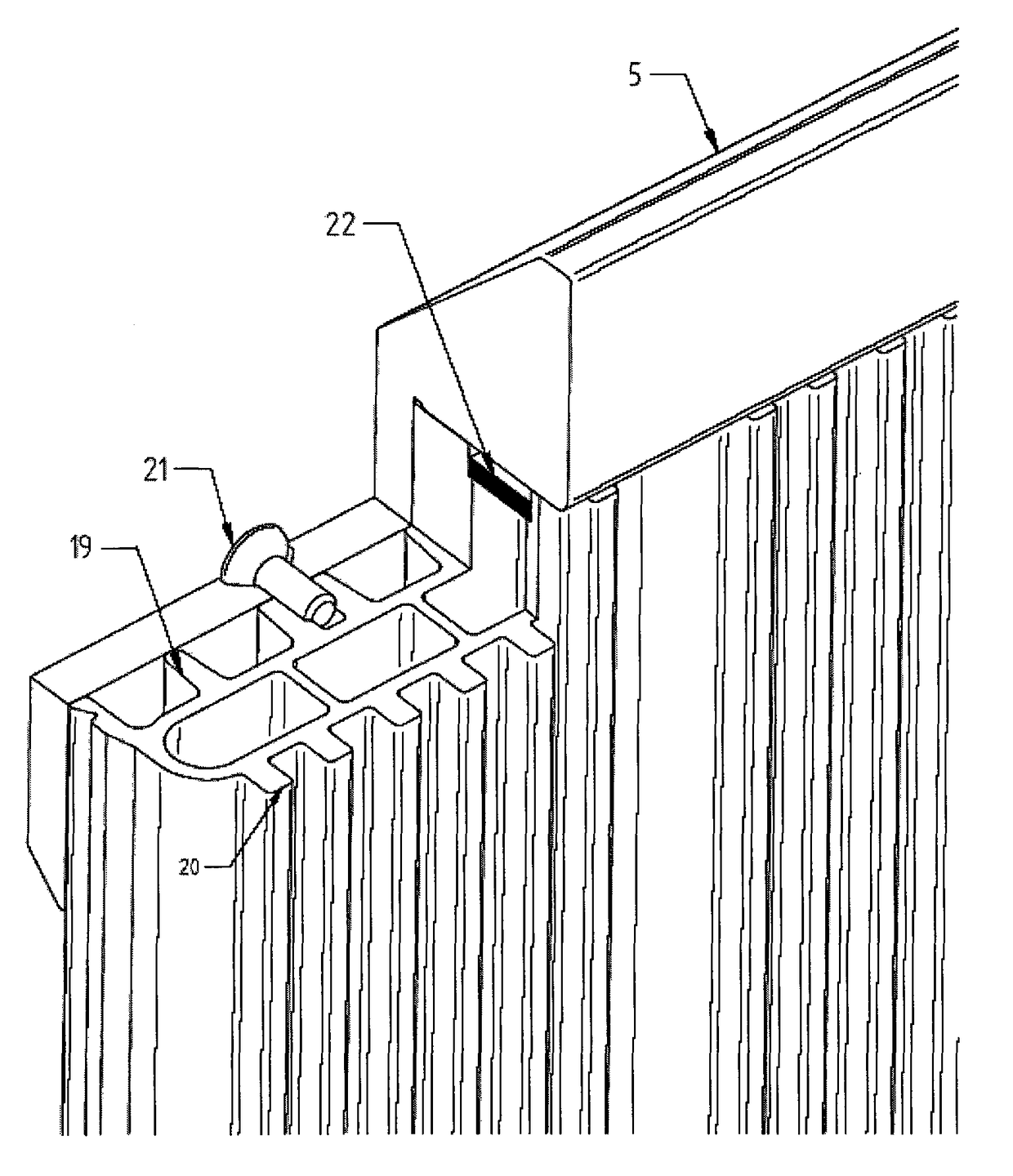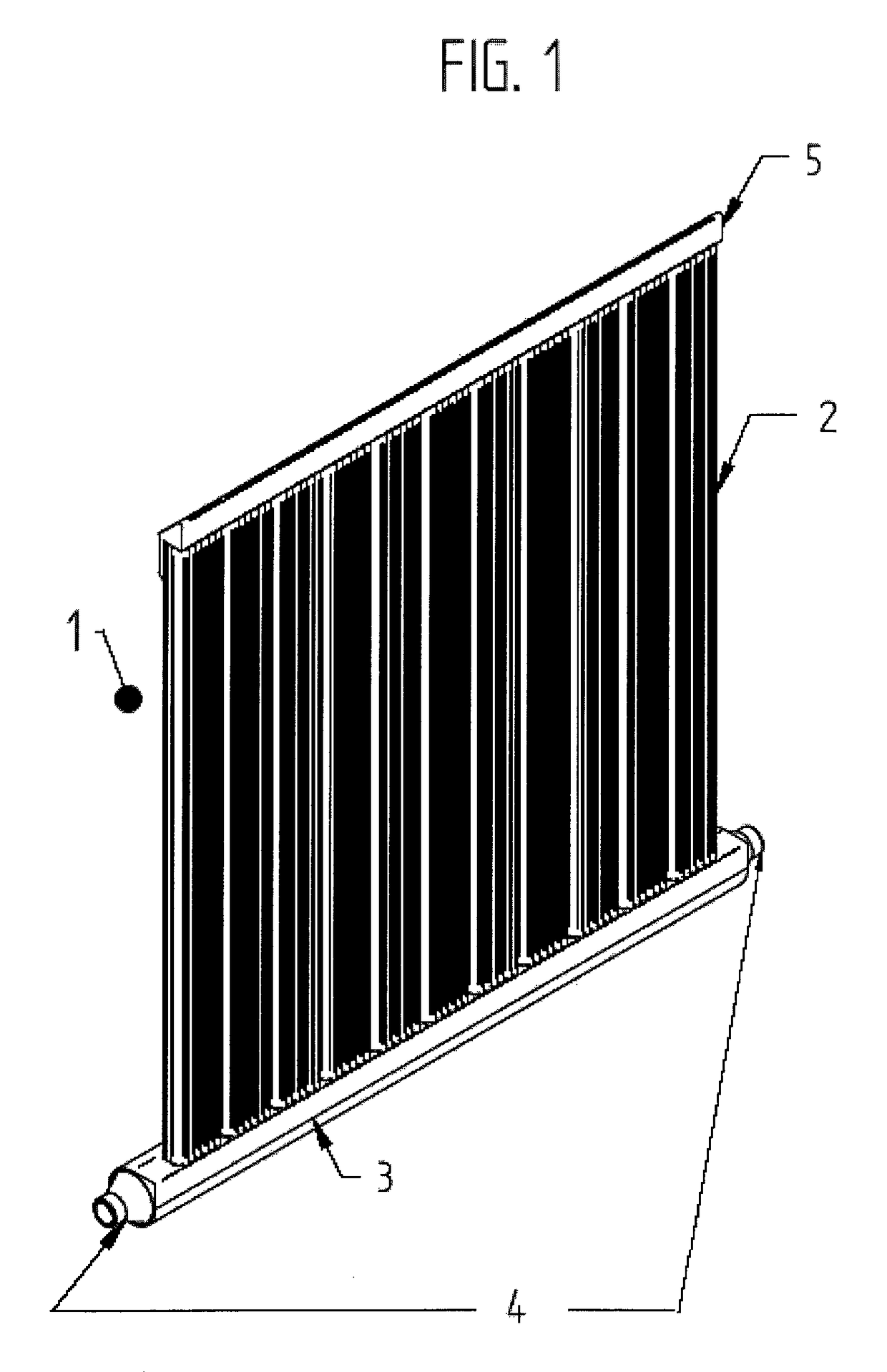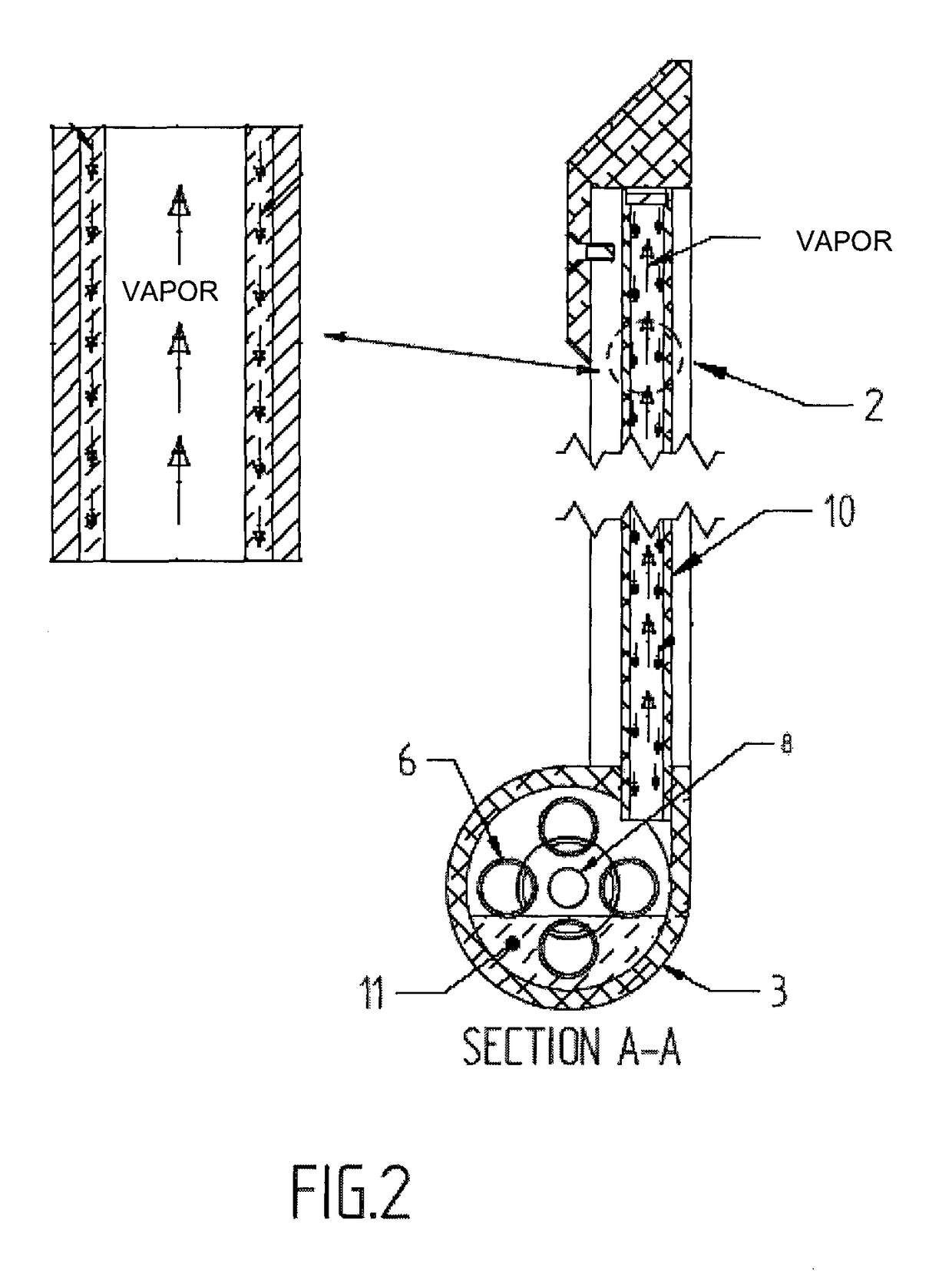Hydronic/biphasic radiator with reduced thermal inertia and low environmental impact
a biphasic radiator and thermal inertia reduction technology, applied in the field of radiators, can solve the problems of inability to prescind, poor comfort of users, and the inability to even achieve the surface distribution of temperature on a traditional-type heater, and achieve the effect of facilitating the nucleate boiling process
- Summary
- Abstract
- Description
- Claims
- Application Information
AI Technical Summary
Benefits of technology
Problems solved by technology
Method used
Image
Examples
Embodiment Construction
[0041]A hydronic biphasic thermosiphon 1 according to the invention is shown in FIG. 1, where numeral 2 indicates the vertical pipes containing the channels along the walls of which the film of moisture forms during operation, and numeral 3 indicates the collector containing the intermediate vector fluid which, during operation, in contact with heat exchanger 6 which is found within the collector, evaporating, rises up the aforementioned channels before condensing along the walls of the same (FIG. 2).
[0042]The pipe bundle-type heat exchanger, as shown in FIGS. 2 and 3 by a group of four pipes 6, is fixed to collector 3 and terminates with two sealing flanges 16, one at the inlet and the other at the outlet of the thermo-vector fluid, each of which rests on the corresponding abutment of collector 3 and is sealingly welded or brazed 14 onto the latter (FIG. 3). Each flange 16 has one or more holes (FIG. 4) for housing and sealingly fixing the pipes 6 within which the water or another ...
PUM
 Login to View More
Login to View More Abstract
Description
Claims
Application Information
 Login to View More
Login to View More - R&D
- Intellectual Property
- Life Sciences
- Materials
- Tech Scout
- Unparalleled Data Quality
- Higher Quality Content
- 60% Fewer Hallucinations
Browse by: Latest US Patents, China's latest patents, Technical Efficacy Thesaurus, Application Domain, Technology Topic, Popular Technical Reports.
© 2025 PatSnap. All rights reserved.Legal|Privacy policy|Modern Slavery Act Transparency Statement|Sitemap|About US| Contact US: help@patsnap.com



